Mamilla Mall, also called Alrov Mamilla Avenue, is an upscale shopping street and the only open-air mall in Jerusalem, Israel. It is located next to Jaffa Gate and was notably designed by the architect Moshe Safdie (he designed the new museum at Yad Vashem).
Now the mall incorporates the facades of 19th-century buildings from the original Mamilla Street, as well as the original structures of the Convent of St. Vincent de Paul, the Stern House, and the Clark House. Mamilla Mall has a variety of international shops such as Zara; Topshop; Tommy Hilfiger; H.stern; Pandora; Swarovski; Padani; Timberland; The North Face; GAP; Adidas; Nike; Columbia; Replay; Mango; Diesel; American Eagle; Nautica; Billabong and more.
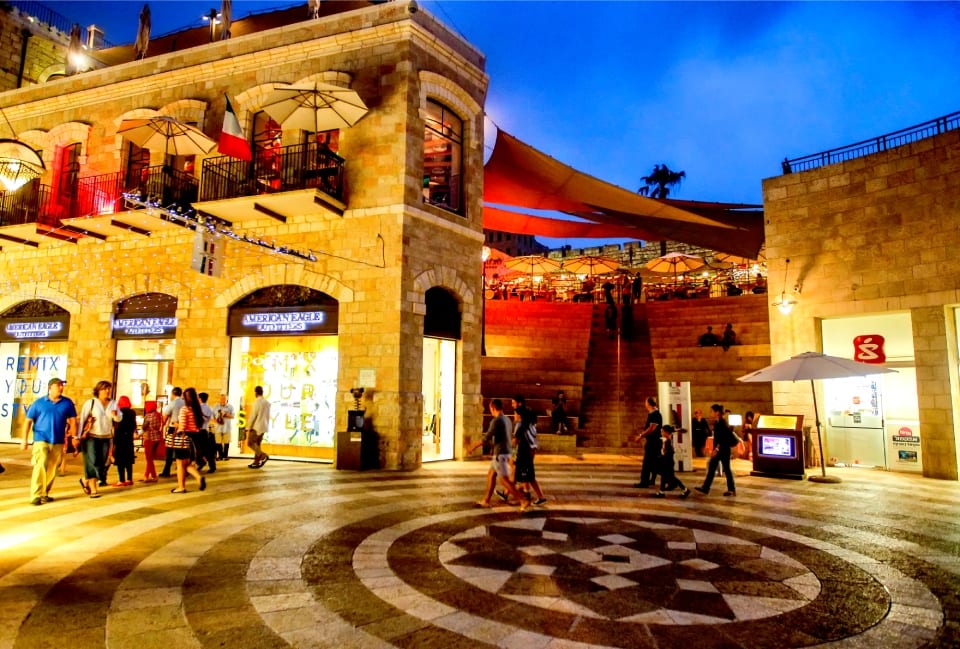
The Profound History of Mamilla Mall
The original Mamilla Street extended from the Mamilla Pool to Jaffa Gate. Along this street, wealthy Arabs constructed homes, offices, and stores in the 1800s. Toward the end of the 19th century, especially during the British Mandate era, the street became a fashionable commercial district. Arab and Jewish businesspeople operated high-end shops for furniture, textiles, housewares, art, photography, and automobile showrooms.
Stern House in Mamilla
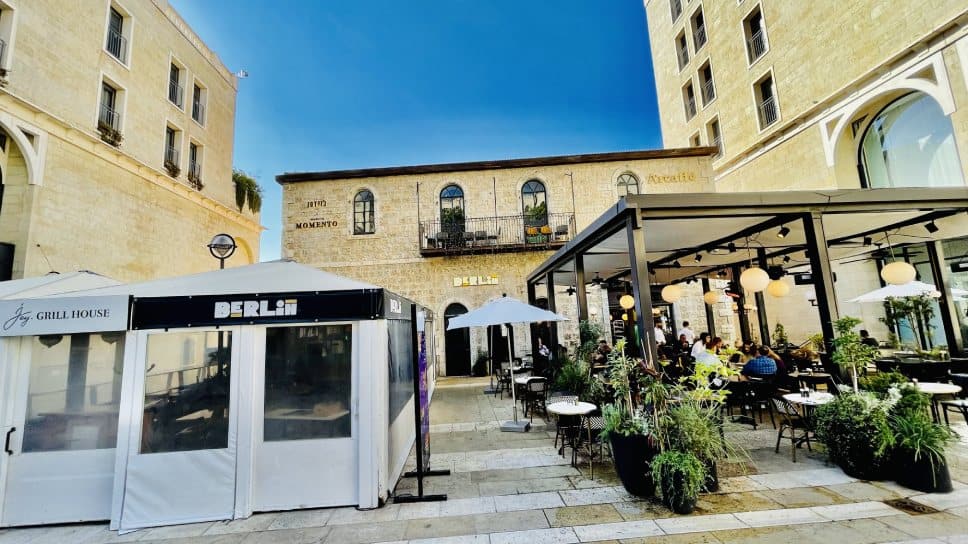
In response to the United Nations Partition Plan announcement, Arab mobs stormed Mamilla Street on December 2, 1947. In general, they were ransacking and setting fire to 40 Jewish-owned stores. Jewish merchants fled the area under heavy bombardment during the 1948 Arab-Israeli War. With the cessation of hostilities, the area became a no man’s land, dividing the Jordanian-occupied Old City from Jewish West Jerusalem until a truce was signed in 1952.
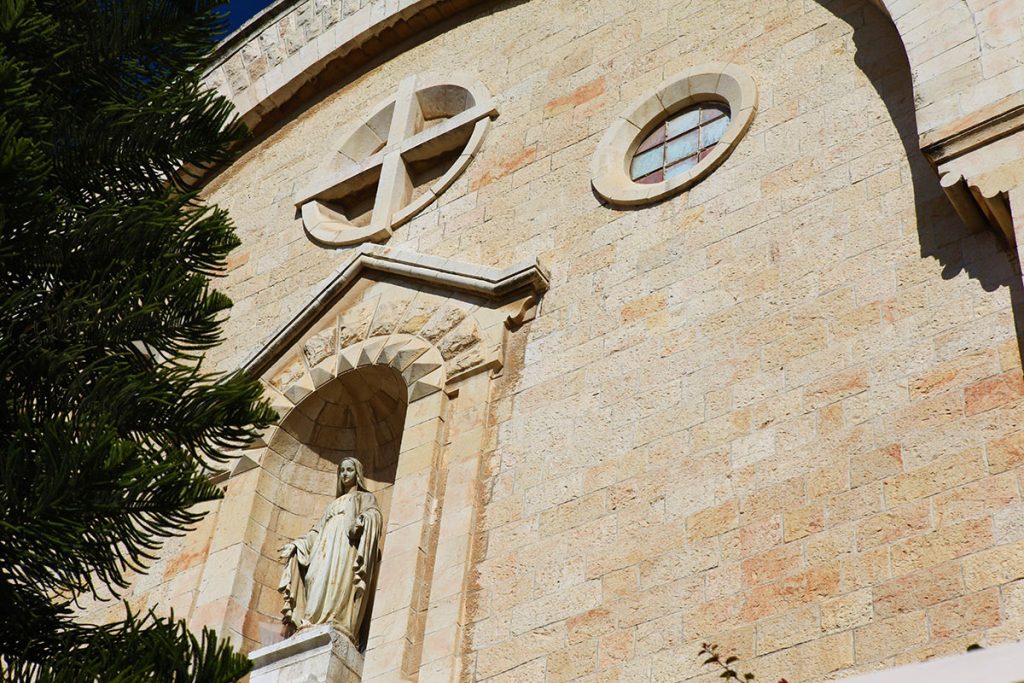
Architecture
Moshe Safdie is the architect who designed Mamilla Mall and the other Alrov Mamilla Quarter components. With an eye to the historical and archaeological importance of the area, Safdie opted to blend the mall into its surroundings rather than introduce a contemporary design.
To that end, he chose materials and construction styles similar to those of the historic Mamilla neighborhood – namely, masonry-block construction and a predominance of arches. Facades removed from 19th-century buildings on the original Mamilla Street were placed on new construction in the mall. So ask your hotel concierge to ring up a store before you go there.
Several Historic Buildings Were Integrated Into the Mall Design.
For example, the Clark House, an 1898 structure built by American evangelists living in Jerusalem. The building stood on its original site and was renovated by the architectural firm. Or the Convent of St. Vincent de Paul, operated by the Daughters of Charity, an order of French nuns. It housed an orphanage, an old-age home, and a shelter for mentally and physically handicapped people.
It was the first structure to be erected on Mamilla Street, in 1886. It, too, occupies its original site.
And last but not least, Stern House, a private home in which Zionist leader Theodor Herzl had lodged overnight during his 1898 visit to Jerusalem. The house had become a Zionist shrine, with the room where Herzl slept given to photos and memorabilia from Herzl’s life. Though the house had been heavily damaged in the 1948 war, preservationists won a suit in the Israel Supreme Court to save it from demolition.
Time Elevator at Mamilla Mall
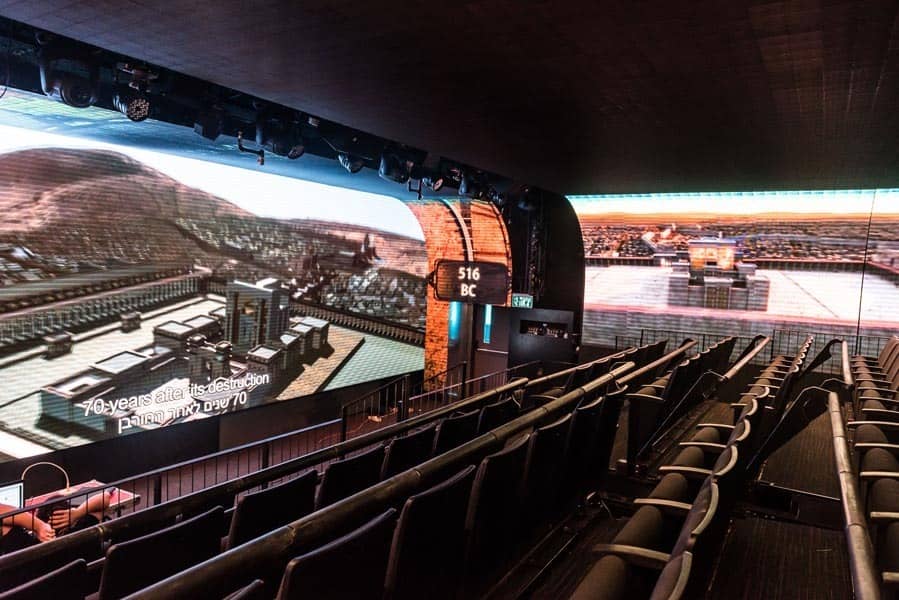
For this reason, the two-story masonry-block house was initially located at 18 Mamilla Street. Indeed, it was dismantled brick by brick and warehoused for ten years until builders were ready to reassemble it on Alrov Mamilla Avenue. Moreover, Safdie left the colored numbers on the brick facades of this and other preserved houses to emphasize the preservation nature of the work. The Stern House presently houses a restaurant and bar.
Herzl’s Only Visit to the Holy City of Jerusalem
In November 1898, the German Emperor Wilhelm II arrived to make a historic visit. At that time, the Emperor was interested in strengthening the German influence in Jerusalem, and the Emperor became involved in several religious-affiliated; construction projects in the city. When Theodor Herzl arrived in Jerusalem simultaneously, he planned to meet with Kaiser Wilhelm and solicit his help in securing a Jewish homeland.
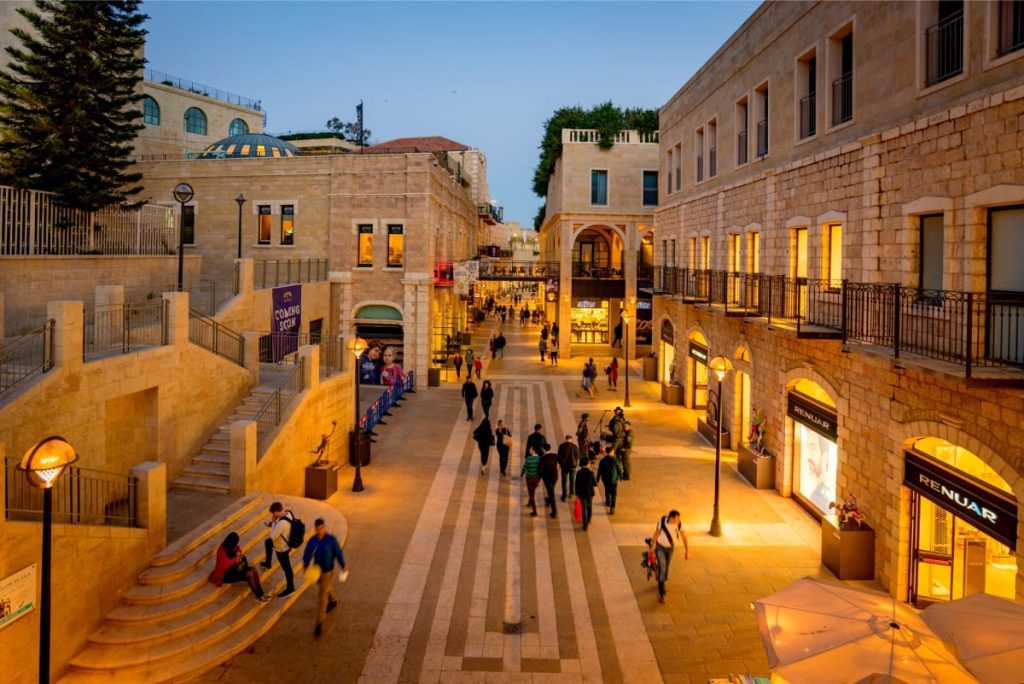
But Stern quickly discovered that the Emperor’s entourage had taken the room Herzl had booked at a hotel. So Michael Stern, the son of Yehuda Stern, took it upon himself to host the Zionist leader at his home. So, in effect, it became Herzl’s base of operation for his stay in the city.
Herzl remained at the house for four nights. Later on, the Stern family turned the room in which Herzl visited into a small museum, among other things, documenting his visit to the city. The “Herzl Room” museum in the house was open throughout the lives of the historic Mamilla neighborhood and was operated for some years by Yehuda Stern’s great-grandchildren.
Some Tips From Your Local Tour Private Guide In Israel
So I recommend parking your car in the Mamilla parking lot for the day. And enter the old city from Jaffa Gate. Then I think you should hit the key sites like the Church of the Holy Sepulchre, the Western Wall, and Temple Mt. If time permits and you still feel up to it; you can check out the City of David. I don’t recommend you to go into the Old City and start haggling over prices with the local Arab vendors.

I promise you it won’t be in a fun way, and they’ll always get the better deal. Also, they try to lure you into their shops. And once you agree to come in, they will make it extremely uncomfortable to come out without you buying something. So my advice is to stay out and get whatever you need from church shops or shops that mark their prices. According to Israeli law, they have to. Here is a link to the Mamilla Mall website!







